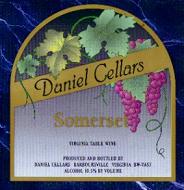 |
|
Wine Details
Price:
$10.00 per bottle
Description:
A sweet wine made with Chardonnay, Vidal Blanc, Riesling, Norton, Chambourcin and Cabernet Sauvignon. The Norton, Chambourcin and Cabernet Sauvignon give the wine its color. This wine is fermented and unfermented Vidal Blanc juice is added back. The flavors remind us of mixed fruit and honey.
|
|
|